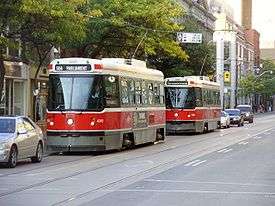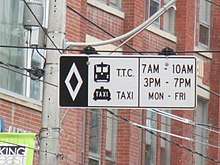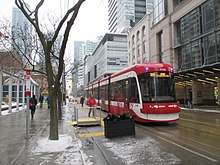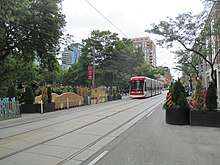504 King
| 504 King | ||||||||||||||||||||||||||||||||||||||||||||||||||||||||||||||||||||||||||||||||||||||||||||||||||||||||||||||||||||||||||||||||||||||||||||||||||||||||||||||||||||||||||||||||||||||||||||||||||||||||||||||||||||||||||||||||||||||||||||||||||||||||||||||||||||||||||||||||||||||||||||||||||||||||||||||||||||||||||||||||||||||||||||||||||||||||||||||||||||||||||||||||||||||||||||||||||||||||||||||||||||||||||||||||||||||||||||||||||||||||||||||||||||||||||||||||||||||||||||||||||||||||||||||||||||||||||||||||||||||||||||||||||||||||||||||||||||||||||||||||||||||||||||||||||||||||||||||||||||||||||||||||||||||||||||||||||||||||||||||||||
|---|---|---|---|---|---|---|---|---|---|---|---|---|---|---|---|---|---|---|---|---|---|---|---|---|---|---|---|---|---|---|---|---|---|---|---|---|---|---|---|---|---|---|---|---|---|---|---|---|---|---|---|---|---|---|---|---|---|---|---|---|---|---|---|---|---|---|---|---|---|---|---|---|---|---|---|---|---|---|---|---|---|---|---|---|---|---|---|---|---|---|---|---|---|---|---|---|---|---|---|---|---|---|---|---|---|---|---|---|---|---|---|---|---|---|---|---|---|---|---|---|---|---|---|---|---|---|---|---|---|---|---|---|---|---|---|---|---|---|---|---|---|---|---|---|---|---|---|---|---|---|---|---|---|---|---|---|---|---|---|---|---|---|---|---|---|---|---|---|---|---|---|---|---|---|---|---|---|---|---|---|---|---|---|---|---|---|---|---|---|---|---|---|---|---|---|---|---|---|---|---|---|---|---|---|---|---|---|---|---|---|---|---|---|---|---|---|---|---|---|---|---|---|---|---|---|---|---|---|---|---|---|---|---|---|---|---|---|---|---|---|---|---|---|---|---|---|---|---|---|---|---|---|---|---|---|---|---|---|---|---|---|---|---|---|---|---|---|---|---|---|---|---|---|---|---|---|---|---|---|---|---|---|---|---|---|---|---|---|---|---|---|---|---|---|---|---|---|---|---|---|---|---|---|---|---|---|---|---|---|---|---|---|---|---|---|---|---|---|---|---|---|---|---|---|---|---|---|---|---|---|---|---|---|---|---|---|---|---|---|---|---|---|---|---|---|---|---|---|---|---|---|---|---|---|---|---|---|---|---|---|---|---|---|---|---|---|---|---|---|---|---|---|---|---|---|---|---|---|---|---|---|---|---|---|---|---|---|---|---|---|---|---|---|---|---|---|---|---|---|---|---|---|---|---|---|---|---|---|---|---|---|---|---|---|---|---|---|---|---|---|---|---|---|---|---|---|---|---|---|---|---|---|---|---|---|---|---|---|---|---|---|---|---|---|---|---|---|---|---|---|---|---|---|---|---|---|---|---|---|---|---|---|---|---|---|---|---|---|---|---|---|---|---|---|---|---|---|---|---|---|---|---|---|---|---|---|---|---|---|---|---|---|---|---|---|---|---|---|---|---|---|---|---|---|---|---|---|---|---|---|---|---|---|---|---|---|---|---|---|---|---|---|---|---|---|---|---|---|---|---|---|---|---|---|---|---|---|---|---|---|---|---|---|---|---|---|---|---|---|---|---|---|---|---|---|---|---|---|---|---|---|---|---|---|---|---|---|---|---|---|---|---|---|---|---|---|---|---|---|---|---|---|---|---|---|---|---|---|---|---|---|---|---|---|---|---|---|---|---|---|---|---|---|---|---|---|---|---|---|---|---|---|---|---|---|---|---|---|---|---|---|---|---|---|---|---|---|---|---|---|---|---|---|---|---|---|---|---|---|---|---|---|
 | ||||||||||||||||||||||||||||||||||||||||||||||||||||||||||||||||||||||||||||||||||||||||||||||||||||||||||||||||||||||||||||||||||||||||||||||||||||||||||||||||||||||||||||||||||||||||||||||||||||||||||||||||||||||||||||||||||||||||||||||||||||||||||||||||||||||||||||||||||||||||||||||||||||||||||||||||||||||||||||||||||||||||||||||||||||||||||||||||||||||||||||||||||||||||||||||||||||||||||||||||||||||||||||||||||||||||||||||||||||||||||||||||||||||||||||||||||||||||||||||||||||||||||||||||||||||||||||||||||||||||||||||||||||||||||||||||||||||||||||||||||||||||||||||||||||||||||||||||||||||||||||||||||||||||||||||||||||||||||||||||||
| Overview | ||||||||||||||||||||||||||||||||||||||||||||||||||||||||||||||||||||||||||||||||||||||||||||||||||||||||||||||||||||||||||||||||||||||||||||||||||||||||||||||||||||||||||||||||||||||||||||||||||||||||||||||||||||||||||||||||||||||||||||||||||||||||||||||||||||||||||||||||||||||||||||||||||||||||||||||||||||||||||||||||||||||||||||||||||||||||||||||||||||||||||||||||||||||||||||||||||||||||||||||||||||||||||||||||||||||||||||||||||||||||||||||||||||||||||||||||||||||||||||||||||||||||||||||||||||||||||||||||||||||||||||||||||||||||||||||||||||||||||||||||||||||||||||||||||||||||||||||||||||||||||||||||||||||||||||||||||||||||||||||||||
| Type | Streetcar | |||||||||||||||||||||||||||||||||||||||||||||||||||||||||||||||||||||||||||||||||||||||||||||||||||||||||||||||||||||||||||||||||||||||||||||||||||||||||||||||||||||||||||||||||||||||||||||||||||||||||||||||||||||||||||||||||||||||||||||||||||||||||||||||||||||||||||||||||||||||||||||||||||||||||||||||||||||||||||||||||||||||||||||||||||||||||||||||||||||||||||||||||||||||||||||||||||||||||||||||||||||||||||||||||||||||||||||||||||||||||||||||||||||||||||||||||||||||||||||||||||||||||||||||||||||||||||||||||||||||||||||||||||||||||||||||||||||||||||||||||||||||||||||||||||||||||||||||||||||||||||||||||||||||||||||||||||||||||||||||||
| Locale | Toronto, Ontario | |||||||||||||||||||||||||||||||||||||||||||||||||||||||||||||||||||||||||||||||||||||||||||||||||||||||||||||||||||||||||||||||||||||||||||||||||||||||||||||||||||||||||||||||||||||||||||||||||||||||||||||||||||||||||||||||||||||||||||||||||||||||||||||||||||||||||||||||||||||||||||||||||||||||||||||||||||||||||||||||||||||||||||||||||||||||||||||||||||||||||||||||||||||||||||||||||||||||||||||||||||||||||||||||||||||||||||||||||||||||||||||||||||||||||||||||||||||||||||||||||||||||||||||||||||||||||||||||||||||||||||||||||||||||||||||||||||||||||||||||||||||||||||||||||||||||||||||||||||||||||||||||||||||||||||||||||||||||||||||||||
| Termini |
Dundas West station (west) for 504A Broadview station (east) for 504B Distillery Loop (east) for 504A Dufferin Gate Loop (west) for 504B | |||||||||||||||||||||||||||||||||||||||||||||||||||||||||||||||||||||||||||||||||||||||||||||||||||||||||||||||||||||||||||||||||||||||||||||||||||||||||||||||||||||||||||||||||||||||||||||||||||||||||||||||||||||||||||||||||||||||||||||||||||||||||||||||||||||||||||||||||||||||||||||||||||||||||||||||||||||||||||||||||||||||||||||||||||||||||||||||||||||||||||||||||||||||||||||||||||||||||||||||||||||||||||||||||||||||||||||||||||||||||||||||||||||||||||||||||||||||||||||||||||||||||||||||||||||||||||||||||||||||||||||||||||||||||||||||||||||||||||||||||||||||||||||||||||||||||||||||||||||||||||||||||||||||||||||||||||||||||||||||||
| Stations |
| |||||||||||||||||||||||||||||||||||||||||||||||||||||||||||||||||||||||||||||||||||||||||||||||||||||||||||||||||||||||||||||||||||||||||||||||||||||||||||||||||||||||||||||||||||||||||||||||||||||||||||||||||||||||||||||||||||||||||||||||||||||||||||||||||||||||||||||||||||||||||||||||||||||||||||||||||||||||||||||||||||||||||||||||||||||||||||||||||||||||||||||||||||||||||||||||||||||||||||||||||||||||||||||||||||||||||||||||||||||||||||||||||||||||||||||||||||||||||||||||||||||||||||||||||||||||||||||||||||||||||||||||||||||||||||||||||||||||||||||||||||||||||||||||||||||||||||||||||||||||||||||||||||||||||||||||||||||||||||||||||
| Daily ridership | 64,579 (2014)[1] | |||||||||||||||||||||||||||||||||||||||||||||||||||||||||||||||||||||||||||||||||||||||||||||||||||||||||||||||||||||||||||||||||||||||||||||||||||||||||||||||||||||||||||||||||||||||||||||||||||||||||||||||||||||||||||||||||||||||||||||||||||||||||||||||||||||||||||||||||||||||||||||||||||||||||||||||||||||||||||||||||||||||||||||||||||||||||||||||||||||||||||||||||||||||||||||||||||||||||||||||||||||||||||||||||||||||||||||||||||||||||||||||||||||||||||||||||||||||||||||||||||||||||||||||||||||||||||||||||||||||||||||||||||||||||||||||||||||||||||||||||||||||||||||||||||||||||||||||||||||||||||||||||||||||||||||||||||||||||||||||||
| Operation | ||||||||||||||||||||||||||||||||||||||||||||||||||||||||||||||||||||||||||||||||||||||||||||||||||||||||||||||||||||||||||||||||||||||||||||||||||||||||||||||||||||||||||||||||||||||||||||||||||||||||||||||||||||||||||||||||||||||||||||||||||||||||||||||||||||||||||||||||||||||||||||||||||||||||||||||||||||||||||||||||||||||||||||||||||||||||||||||||||||||||||||||||||||||||||||||||||||||||||||||||||||||||||||||||||||||||||||||||||||||||||||||||||||||||||||||||||||||||||||||||||||||||||||||||||||||||||||||||||||||||||||||||||||||||||||||||||||||||||||||||||||||||||||||||||||||||||||||||||||||||||||||||||||||||||||||||||||||||||||||||||
| Operator(s) | Toronto Transit Commission | |||||||||||||||||||||||||||||||||||||||||||||||||||||||||||||||||||||||||||||||||||||||||||||||||||||||||||||||||||||||||||||||||||||||||||||||||||||||||||||||||||||||||||||||||||||||||||||||||||||||||||||||||||||||||||||||||||||||||||||||||||||||||||||||||||||||||||||||||||||||||||||||||||||||||||||||||||||||||||||||||||||||||||||||||||||||||||||||||||||||||||||||||||||||||||||||||||||||||||||||||||||||||||||||||||||||||||||||||||||||||||||||||||||||||||||||||||||||||||||||||||||||||||||||||||||||||||||||||||||||||||||||||||||||||||||||||||||||||||||||||||||||||||||||||||||||||||||||||||||||||||||||||||||||||||||||||||||||||||||||||
| Depot(s) | [2][3] | |||||||||||||||||||||||||||||||||||||||||||||||||||||||||||||||||||||||||||||||||||||||||||||||||||||||||||||||||||||||||||||||||||||||||||||||||||||||||||||||||||||||||||||||||||||||||||||||||||||||||||||||||||||||||||||||||||||||||||||||||||||||||||||||||||||||||||||||||||||||||||||||||||||||||||||||||||||||||||||||||||||||||||||||||||||||||||||||||||||||||||||||||||||||||||||||||||||||||||||||||||||||||||||||||||||||||||||||||||||||||||||||||||||||||||||||||||||||||||||||||||||||||||||||||||||||||||||||||||||||||||||||||||||||||||||||||||||||||||||||||||||||||||||||||||||||||||||||||||||||||||||||||||||||||||||||||||||||||||||||||
| Rolling stock | CLRV, Flexity Outlook[4] | |||||||||||||||||||||||||||||||||||||||||||||||||||||||||||||||||||||||||||||||||||||||||||||||||||||||||||||||||||||||||||||||||||||||||||||||||||||||||||||||||||||||||||||||||||||||||||||||||||||||||||||||||||||||||||||||||||||||||||||||||||||||||||||||||||||||||||||||||||||||||||||||||||||||||||||||||||||||||||||||||||||||||||||||||||||||||||||||||||||||||||||||||||||||||||||||||||||||||||||||||||||||||||||||||||||||||||||||||||||||||||||||||||||||||||||||||||||||||||||||||||||||||||||||||||||||||||||||||||||||||||||||||||||||||||||||||||||||||||||||||||||||||||||||||||||||||||||||||||||||||||||||||||||||||||||||||||||||||||||||||
| Technical | ||||||||||||||||||||||||||||||||||||||||||||||||||||||||||||||||||||||||||||||||||||||||||||||||||||||||||||||||||||||||||||||||||||||||||||||||||||||||||||||||||||||||||||||||||||||||||||||||||||||||||||||||||||||||||||||||||||||||||||||||||||||||||||||||||||||||||||||||||||||||||||||||||||||||||||||||||||||||||||||||||||||||||||||||||||||||||||||||||||||||||||||||||||||||||||||||||||||||||||||||||||||||||||||||||||||||||||||||||||||||||||||||||||||||||||||||||||||||||||||||||||||||||||||||||||||||||||||||||||||||||||||||||||||||||||||||||||||||||||||||||||||||||||||||||||||||||||||||||||||||||||||||||||||||||||||||||||||||||||||||||
| Line length | 13.97 km (8.68 mi) [3] | |||||||||||||||||||||||||||||||||||||||||||||||||||||||||||||||||||||||||||||||||||||||||||||||||||||||||||||||||||||||||||||||||||||||||||||||||||||||||||||||||||||||||||||||||||||||||||||||||||||||||||||||||||||||||||||||||||||||||||||||||||||||||||||||||||||||||||||||||||||||||||||||||||||||||||||||||||||||||||||||||||||||||||||||||||||||||||||||||||||||||||||||||||||||||||||||||||||||||||||||||||||||||||||||||||||||||||||||||||||||||||||||||||||||||||||||||||||||||||||||||||||||||||||||||||||||||||||||||||||||||||||||||||||||||||||||||||||||||||||||||||||||||||||||||||||||||||||||||||||||||||||||||||||||||||||||||||||||||||||||||
| Track gauge | 4 ft 10 7⁄8 in (1,495 mm) – TTC gauge | |||||||||||||||||||||||||||||||||||||||||||||||||||||||||||||||||||||||||||||||||||||||||||||||||||||||||||||||||||||||||||||||||||||||||||||||||||||||||||||||||||||||||||||||||||||||||||||||||||||||||||||||||||||||||||||||||||||||||||||||||||||||||||||||||||||||||||||||||||||||||||||||||||||||||||||||||||||||||||||||||||||||||||||||||||||||||||||||||||||||||||||||||||||||||||||||||||||||||||||||||||||||||||||||||||||||||||||||||||||||||||||||||||||||||||||||||||||||||||||||||||||||||||||||||||||||||||||||||||||||||||||||||||||||||||||||||||||||||||||||||||||||||||||||||||||||||||||||||||||||||||||||||||||||||||||||||||||||||||||||||
| Electrification | 600 VDC Overhead | |||||||||||||||||||||||||||||||||||||||||||||||||||||||||||||||||||||||||||||||||||||||||||||||||||||||||||||||||||||||||||||||||||||||||||||||||||||||||||||||||||||||||||||||||||||||||||||||||||||||||||||||||||||||||||||||||||||||||||||||||||||||||||||||||||||||||||||||||||||||||||||||||||||||||||||||||||||||||||||||||||||||||||||||||||||||||||||||||||||||||||||||||||||||||||||||||||||||||||||||||||||||||||||||||||||||||||||||||||||||||||||||||||||||||||||||||||||||||||||||||||||||||||||||||||||||||||||||||||||||||||||||||||||||||||||||||||||||||||||||||||||||||||||||||||||||||||||||||||||||||||||||||||||||||||||||||||||||||||||||||
| Route number | 504 | |||||||||||||||||||||||||||||||||||||||||||||||||||||||||||||||||||||||||||||||||||||||||||||||||||||||||||||||||||||||||||||||||||||||||||||||||||||||||||||||||||||||||||||||||||||||||||||||||||||||||||||||||||||||||||||||||||||||||||||||||||||||||||||||||||||||||||||||||||||||||||||||||||||||||||||||||||||||||||||||||||||||||||||||||||||||||||||||||||||||||||||||||||||||||||||||||||||||||||||||||||||||||||||||||||||||||||||||||||||||||||||||||||||||||||||||||||||||||||||||||||||||||||||||||||||||||||||||||||||||||||||||||||||||||||||||||||||||||||||||||||||||||||||||||||||||||||||||||||||||||||||||||||||||||||||||||||||||||||||||||
| ||||||||||||||||||||||||||||||||||||||||||||||||||||||||||||||||||||||||||||||||||||||||||||||||||||||||||||||||||||||||||||||||||||||||||||||||||||||||||||||||||||||||||||||||||||||||||||||||||||||||||||||||||||||||||||||||||||||||||||||||||||||||||||||||||||||||||||||||||||||||||||||||||||||||||||||||||||||||||||||||||||||||||||||||||||||||||||||||||||||||||||||||||||||||||||||||||||||||||||||||||||||||||||||||||||||||||||||||||||||||||||||||||||||||||||||||||||||||||||||||||||||||||||||||||||||||||||||||||||||||||||||||||||||||||||||||||||||||||||||||||||||||||||||||||||||||||||||||||||||||||||||||||||||||||||||||||||||||||||||||||
The 504 King is an east–west streetcar route in Toronto, Ontario, Canada. It serves King Street in Downtown Toronto as well as Broadview Avenue on the east end and Roncesvalles Avenue on the west end of the line. The route consists of two overlapping branches: 504A between Dundas West station and Distillery Loop, and 504B Broadview station and Dufferin Gate Loop. (Both Dundas West Broadview stations are on subway Line 2 Bloor–Danforth.) The two branches overlap on King Street between Dufferin and Sumach streets, both passing St. Andrew station and King station on subway Line 1 Yonge–University.
The 504 King is the busiest line in the Toronto streetcar system.[4] As of 2017, the combined daily ridership of routes 504 King and 514 Cherry was 72,000 trips, which is significantly higher than two of the TTC's rapid transit lines, Line 3 Scarborough (38,570) and Line 4 Sheppard (49,070). The 514 route was merged into the 504 route on October 7, 2018.[5]
History
On July 1, 1923, as part of a reorganization of streetcar routes, the King streetcar route acquired its current U-shape. The west end of the line was at the Vincent Loop, located near the north-east corner of Dundas Street West and Bloor Street West, across the street from today's Dundas West station. The east end of the line was at the Erindale Loop, located at the north-east corner of Broadview Avenue and Erindale Avenue, on the north side of today's Broadview station.[6]
On February 25, 1966, the Bloor–Danforth subway (today Line 2 Bloor–Danforth) opened, and Dundas West station replaced the Vincent Loop, and Broadview station replaced the Erindale loop. Both new subway stations had, and still have, a streetcar loop within the fare-paid zone. Otherwise, the King streetcar route had little changed since 1923.[6]

In 1993, the streetcar tracks along King Street between Dufferin and Parliament streets were made reserved lanes during rush hours for streetcars and taxis only. Other road traffic were to use the curb lanes during rush hours when parking and stopping would be prohibited. This effort to improve rush-hour streetcar service failed as there was insufficient police enforcement to prevent illegal parking resulting in motorists continuing to drive on the tracks. As of 2017, some signs for the rush-hour restrictions still hung from the streetcar crosswires. (See photo right.)[6]
In 2006 the TTC briefly considered adding couplers to streetcars to enable operation in consists of two or three units, a common practice until the opening of the Bloor-Danforth subway; the expectation was that this would keep them from bunching and becoming stuck in traffic. This plan was rejected[7] in favour of ordering brand-new, longer Flexity Outlook vehicles.
Starting June 19, 2016, a new route — 514 Cherry — was created to supplement 504 King service on King Street between Dufferin and Sumach streets. The 514 route increased capacity along the King Street corridor to address the growing downtown ridership and accessibility concerns through its use of the low-floor Flexity Outlook streetcars.[8]
On weekends in early 2017, the TTC assigned Flexity Outlook streetcars on 504 King using vehicles normally used on other routes weekdays.[9]
On December 2, 2017, the TTC assigned a minimum of two Flexity Outlook streetcars on 504 King to handle weekday overcrowding, as the King Street Pilot Project improved service performance making the service more popular.[4]
On October 7, 2018, 504 King was divided into two overlapping branches with two new termini (Dufferin Gate Loop and Distillery Loop) replacing the 514 Cherry route which was permanently cancelled on the same date. The 304 King Blue Night service remained unchanged.[10]
King Street transit mall
On March 22, 2007, the TTC proposed a pilot project for a transit mall along King Street, to be implemented for the summer of 2007. The proposal suggested reserving a lane in each direction for streetcars and making the remaining lane in each direction available to private vehicles and deliveries in designated areas. The street would have been closed entirely to through traffic and streetcars would run at ground level, not in a raised median. This arrangement could eventually lead to the trial implementation of a transit mall on King between Yonge Street and University Avenue, with hopes of eventually closing King to cars from Dufferin to Parliament. It was also hoped that traffic on King would be partially alleviated by the proposed Waterfront West LRT and the planned network of streetcar routes for the Port Lands.
While the initial pilot project was not implemented, proposals were revived in 2016 when the city of Toronto's "King Street Visioning Study" proposed a transit and pedestrian corridor on King Street through downtown.[11]
In February 2017, as part of the King Street Pilot Study, City staff proposed three options, of which one would be submitted to City Council for approval in July and implementation as a pilot in the fall of 2017. One of the three options was similar to the 2007 proposal. All three options forbade left turns, and two options forced auto traffic to leave King Street by a right turn after travelling only one block. All three options aimed to reduce automobile interference with streetcar operation between Bathurst Street in the west and either Parliament Street or Jarvis Street in the east.[12]
On July 6, 2017, Toronto City Council by a vote of 34 to 4 approved a one-year, $1.5-million pilot project to improve streetcar service along King Street between Bathurst and Jarvis Streets. The project would limit automobiles to travel only one block before being forced to turn right, and left turns would be prohibited. However, over the objections of the TTC, Council granted taxi cabs an exemption on the ban against through traffic between 10pm and 5am. The TTC said that King Street is busy overnight forcing streetcars to slow down to between 4.6 and 6.8 km/hr.[13]
On October 23, 2017, the City of Toronto published a plan for the King Street Transit Pilot showing the location of streetcar stops and traffic restrictions between Bathurst and Jarvis streets.[14][15] The pilot project went into operation on November 12, 2017 and will last one year. It has resulted in the following changes to King Street between Bathurst and Jarvis streets:[16][17]
- Through traffic is allowed only for TTC vehicles, emergency vehicles, bicycles and road maintenance vehicles at all but two intersections. Because of high pedestrian volume crossing the street, through traffic is allowed at Bay and John streets. However, between 10pm and 5am, taxis may also pass through intersections.[16][17]
- At most signalized intersections, auto and truck traffic on King Street must turn right rather than continuing through.[14]
- No left turns are allowed for auto and truck traffic.[14]
- Most streetcar stops are far-side.[14] However, because it is still just a pilot, existing near-side transit shelters were not moved.[17]
- On-street parking is prohibited, but some space is provided for loading zones and taxi stands.[17]
- Some space in the curb lane will be converted for uses such as seating, sidewalk cafes and bicycle parking.[16]
- At Transit Control, the TTC assigned a dedicated manager to monitor 504 and 514 streetcars along King Street.[17]

After 16 days of operation, University of Toronto researchers determined that the transit mall had reduced the mean travel time for streetcars by 24% westbound (from 22.8 to 17.3 minutes) and 20% eastbound (from 20.6 to 16.4 minutes) during the evening rush hour. Only 1.3% of streetcars take more than 25 minutes to travel between Jarvis and Bathurst streets during the evening rush hour versus 19% prior to the pilot. However, crowding on routes 504 and 514 has increased forcing riders to wait, as several streetcars pass, for room to board; improved travel times have increased demand for streetcar service through the transit mall. To address the increased demand, the TTC has started to assign two Flexity streetcars, plus future Flexity deliveries from Bombardier, to route 504. This is in addition to the 10 Flexity streetcars on route 514 and 44 CLRVs on route 504. The City's Transportation Services department has yet to adjust traffic light timings to give more green-light time for streetcars within the transit mall.[4]

By December 12, 2017, City staff reported that the transit mall had reduced streetcar travel time during the morning rush hours from 15.3 to 14.9 minutes eastbound, and from 15.2 to 14.3 minutes westbound. During the evening rush hours, travel time was reduced from 18.9 to 17.6 minutes eastbound, and 19 minutes to 16.4 minutes westbound. The mall allowed better spacing of streetcars reducing the problem of streetcar bunching. The mall had little impact on traffic on neighbouring streets. Statistics differed between the U of T analysis and the city's because different pre-pilot periods were selected, and because the U of T had a shorter duration of data. At the time of the City's analysis, traffic signal timing had not yet been changed to speed streetcars.[18]
By mid-January 2018, the TTC released its own analysis, and found that morning rush hour ridership had increased 25% along King Street after implementation of the transit mall, and that the average travel time through the transit mall (Bathurst Street to Jarvis Street) decreased by 14%.[19] The TTC will temporarily replace streetcars on routes 505 Dundas and 506 Carlton with buses, and reassign those streetcars to other routes such as 504 King to handle crowding from increased ridership.[20]
The Ontario Restaurant Hotel and Motel Association reported that 26 restaurants located within the King Street theatre district saw revenue drop by 41% (comparing December 2016 to December 2017). Restaurateurs were attributing the declining revenue to driving restrictions and the removal of on-street parking within the mall.[18][19] The city has started a campaign to attract customers to local businesses along the mall, such as a public space design competition, street performers, warming stations and special promotions. In January 2018, to attract automobile customers, the city offered up to $10 of free parking at municipal parking lots in the area.[21]
By May and June 2018, streetcar ridership along King Street had increased overall by 11% since the King Street Pilot Project had started. Ridership had increased 35% in the morning rush hours and 27% during the evening rush hours. Average travel time at midday was reduced by 2 minutes, and 4 to 5 minutes during the afternoon. 85% of streetcars operated on a headway of 4 minutes. The City found that retail business in the area had increased of 0.3%, although some restaurateurs in the John Street area still complained of lost business due to the pilot.[22]
In early July 2018, the City activated transit signal priority (TSP) along the transit mall. With this improvement, streetcar travel time along the mall was reduced on average by 30 to 126 seconds depending on direction, especially benefiting eastbound streetcars during the evening rush hours. TSP reduces the chances of a streetcar being stopped at a red light saving an average of 8 seconds per signaled intersection. A transponder on the streetcar notifies TSP of a streetcar approaching a signaled intersection; TSP could then extend a green light or shorten a red light facing a streetcar.[23]
Roncesvalles Avenue redesign
On December 19, 2010, 504 streetcar service returned to Roncesvalles Avenue after service was suspended for track replacement works. As part of construction works, the street was rebuilt to a new design including bike lanes and a widened sidewalk "bumpout" at stops to allow riders to board streetcars directly from the curb. In these sections, the bike lane gently rises from the main road to run on top of the bumpout; cyclists are required to stop and allow riders to board or alight from streetcars while stationary at stops.[24][25]
Route
The 504 King route operates as two overlapping branches:
- 504A King streetcars operate from Dundas West Station to Distillery Loop travelling south on Dundas St West / Roncesvalles Ave, east on King St West and East, and south on Cherry Street to Distillery Loop.
- 504B King streetcars operate from Dufferin Gate Loop to Broadview Station travelling north on Dufferin Street, east on King St West and East, east on Queen St East, and north on Broadview Ave to Broadview Station.
In the west, routes 504A King and 505 Dundas start at Dundas West station on Line 2 Bloor–Danforth. From there, both routes go a short distance south of Bloor Street along Dundas Street West to Roncesvalles Avenue, where route 505 Dundas route splits off to continue eastbound on Dundas Street. Route 504A King continues further south on Roncesvalles Avenue, crossing Howard Park Avenue and route 506 Carlton. 504A King passes the Roncesvalles Carhouse as it approaches Queen Street West and The Queensway, where it crosses route 501 Queen.[26]
South of Queen Street West and The Queensway, the route turns east along King Street. At Dufferin Street, 504B streetcars from Dufferin Gate Loop merge with 504A streetcars to provide a combined service along King Street to Sumach Street. Continuing further east to Bathurst Street, and after crossing the 511 Bathurst route, the 504 enters a transit mall where automobiles have restrictions so as not to impede streetcar service. Continuing eastward past Spadina Avenue, crossing route 510 Spadina, the 504 route passes St. Andrew station at University Avenue and King station at Yonge Street, both on the U-shaped Line 1 Yonge–University. At York Street, rush-hour route 503 Kingston Rd merges eastwards with route 504. At Jarvis Street, the transit mall ends and routes 503, 504A and 504B continue to Sumach Street, where route 504A turns south on Cherry Street to proceed to Distillery Loop. Routes 503 and 504B continue on King Street, as the street bends north-east, to merge with Queen Street East, route 501 Queen and workday route 502 Downtowner. Routes 501, 502, 503 and 504B all cross the Queen Street Viaduct and the Don River to arrive at Broadview Avenue.[26]
While routes 501, 502 and 503 continue further east on Queen Street, route 504B turns north on Broadview Avenue. At Dundas Street East, route 505 Dundas merges with route 504B to continue north. At Gerrard Street East, routes 504B and 505 cross the 506 Carlton route. Continuing on Broadview Avenue, routes 504B and 505 eventually cross Danforth Avenue arriving at Broadview station on Line 2 Bloor–Danforth.[26]
Sites along the line (from east to west)
Operation
As of September 6, 2015, service along King Street operates 24 hours a day, seven days a week. During weekday rush hours, daytime and early evenings, average service frequency is 4 minutes or less. Saturday daytime services have an average frequency of 4–5 minutes with Sunday daytime service frequency averaging 6–7 minutes. During overnight periods, streetcars operate every 30 minutes as the 304 King of the Blue Night Network.
Blue Night service
From 1987 to 1992, the Blue Night Network included the 304 King route, which provided overnight service along the length of the 504 King daytime route. The 304 route was eliminated in February 1992 with the Broadview and Roncesvalles segments replaced by portions of other Blue Night bus routes; however, King Street remained unserviced directly until September 6, 2015, when the 304 King was restored as part of a $95 million investment from Toronto City Council. Currently, services operate every 30 minutes between Broadview and Dundas West stations via Broadview Avenue, King Street, and Roncesvalles Avenue.[27]
References
- ↑ TTC Open Data (September 2014). "TTC Ridership – All Day Weekday for Surface Routes". Toronto Transit Commission. Retrieved 1 January 2017.
- ↑ http://www.ttc.ca/PDF/Transit_Planning/Service_Summary_2017-03-26.pdf
- 1 2 Toronto Transit Commission (September 18, 2009). "TTC Service Summary" (PDF).
- 1 2 3 4 Tamar Harris & Ben Spurr (December 4, 2017). "King St. pilot project has slashed streetcar travel times, statistics show". Toronto Star. Retrieved December 5, 2017.
- ↑ Micallef, Shawn (November 17, 2017). "King St. pilot project does what big cities around the world are doing: Micallef". Toronto Star. Retrieved December 6, 2017.
- 1 2 3 Bow, James (September 16, 2017). "Route 504 – The King Streetcar". Transit Toronto. Retrieved December 7, 2017.
- ↑ McGran, Kevin (April 15, 2006). "All aboard for the King St. choo-choo". Toronto Star. Retrieved October 25, 2017.
- ↑ "Improved_Transit_Service_in_EastCentral_Downtown_514_Cherry_.pdf" (PDF). TTC. March 23, 2016. Retrieved April 18, 2016.
- ↑ Spurr, Ben (April 19, 2017). "St. Clair next in line for new TTC streetcars". Toronto Star. Retrieved April 20, 2017.
- ↑ "The current section is Service Advisories 504 King and 514 Cherry route changes". Toronto Transit Commission. October 7, 2018. Archived from the original on September 25, 2018. Retrieved October 7, 2018.
- ↑ Edward Keenan (18 January 2016). "Plan in the works to redesign King Street — and quickly: Keenan". Toronto Star. Retrieved 16 February 2016.
Picture King, just one year from now, from Liberty Village to the Distillery District, as a transit and pedestrian corridor
- ↑ Edward Keenan (February 13, 2017). "King St. plans still leave room for cars: Keenan". Toronto Star. Retrieved 2017-02-13.
- ↑ Spurr, Ben (July 6, 2017). "Council approves King St. pilot to prioritize streetcars, but bows to taxi industry". Toronto Star. Retrieved September 8, 2017.
- 1 2 3 4 "King Street Brochure October 23" (PDF). City of Toronto. October 23, 2017. Retrieved October 25, 2017.
- ↑ Munro, Steve (October 24, 2017). "King Street Pilot Design Unveiled". Steve Munro. Retrieved October 25, 2017.
- 1 2 3 "King Street pilot to launch in November — but not everyone's happy about it". Canadian Broadcasting Corporation. October 26, 2017. Retrieved October 30, 2017.
- 1 2 3 4 5 Spurr, Ben (November 8, 2017). "Street overhaul that puts transit first set to launch on King St". Toronto Star. Retrieved November 9, 2017.
- 1 2 Rider, David (December 12, 2017). "King St. pilot project moving streetcar riders quicker, city says". Toronto Star. Retrieved December 13, 2017.
- 1 2 Spurr, Ben (January 11, 2018). "King St. pilot boosting streetcar ridership: TTC". Toronto Star. Retrieved January 11, 2018.
- ↑ Moore, Oliver (January 11, 2018). "Toronto's King streetcar sees 'spectacular' rise in ridership". The Globe and Mail. Retrieved January 12, 2018.
- ↑ Spurr, Ben (January 12, 2018). "City offering free parking to appease King St. business owners". Toronto Star. Retrieved January 12, 2018.
- ↑ Bañares, Ilya (August 15, 2018). "Latest King St. pilot data shows higher ridership, shorter commutes". Toronto Star. Retrieved August 26, 2018.
- ↑ Moore, Oliver (September 2, 2018). "City reactivates transit signal priority for streetcars along King Street". The Globe and Mail. Retrieved September 3, 2018.
- ↑ "Lanes, tracks and bikes". Roncesvalles Village BIA.
- ↑ Steve Munro (2010-12-19). "Parliament and Roncesvalles 2010 Track Work". Steve Munro. Retrieved 2010-12-19.
- 1 2 3 "504 King – Map". Toronto Transit Commission. November 8, 2017. Retrieved December 7, 2017.
- ↑ Steve Munro (8 August 2015). "Blue Night Service Expansion: Fall 2015". Retrieved 2016-03-28.
All (night) services will operate on 30 minute headways...304 King (will provide) all night service on the 504 King route.
External links
| Wikimedia Commons has media related to 504 King. |
Route map:
- Toronto Transit Commission official site
- 504 King (Transit Toronto)
- 504 King map
- King Street Pilot Study about giving priority to streetcars over automobiles along King Street
- Big changes coming to King Street (King Street Pilot Study) on YouTube published by CityNews Toronto on July 7, 2017
- King Street Transit Pilot on YouTube published by Toronto Transit Commission on November 6, 2017
- TTC responds to overcrowding complaints on King streetcar on YouTube published by CityNews Toronto on November 23, 2017 – 10 days after start of King Street Pilot Project

_(14918534190).jpg)